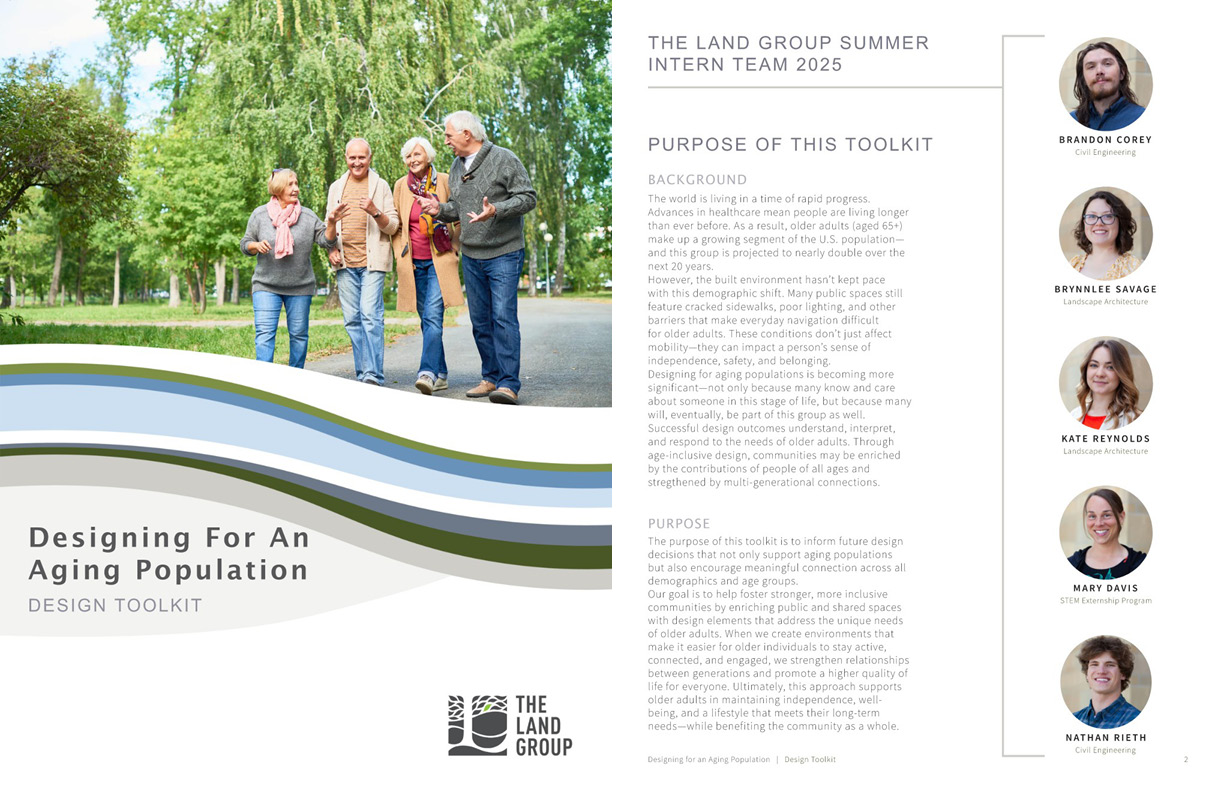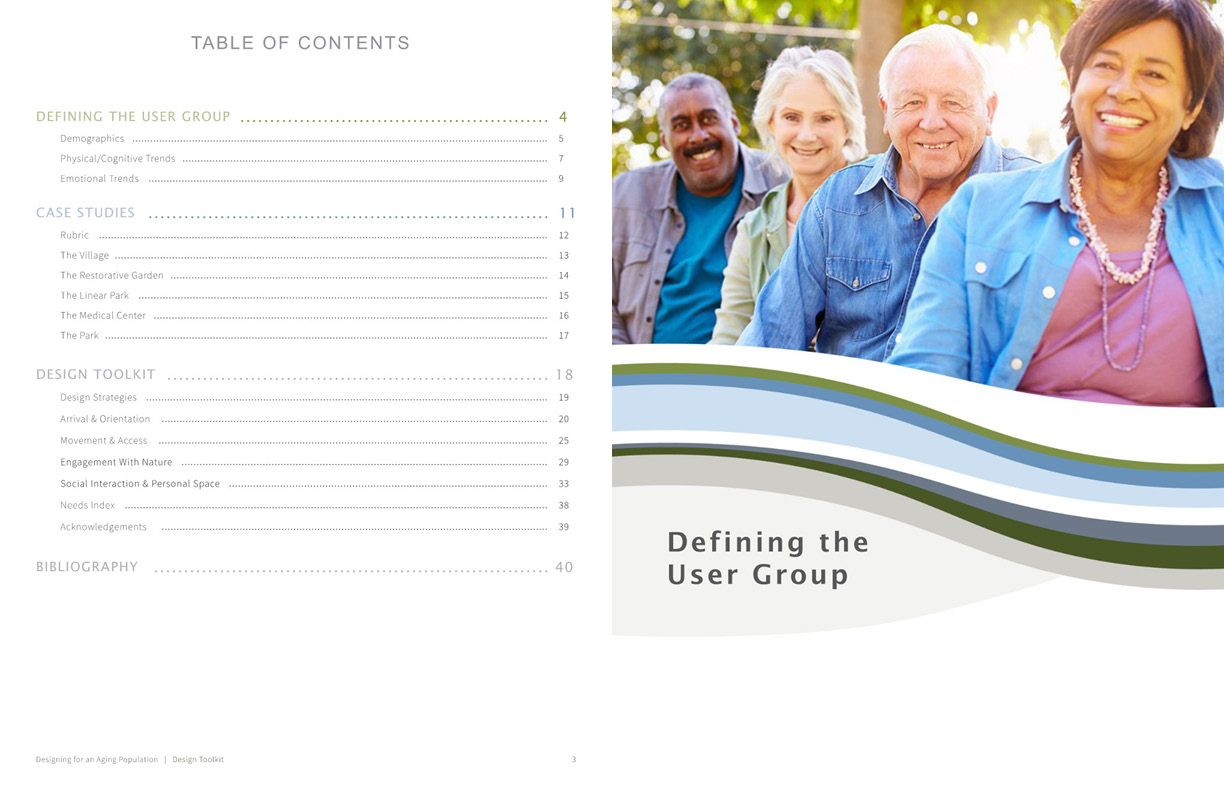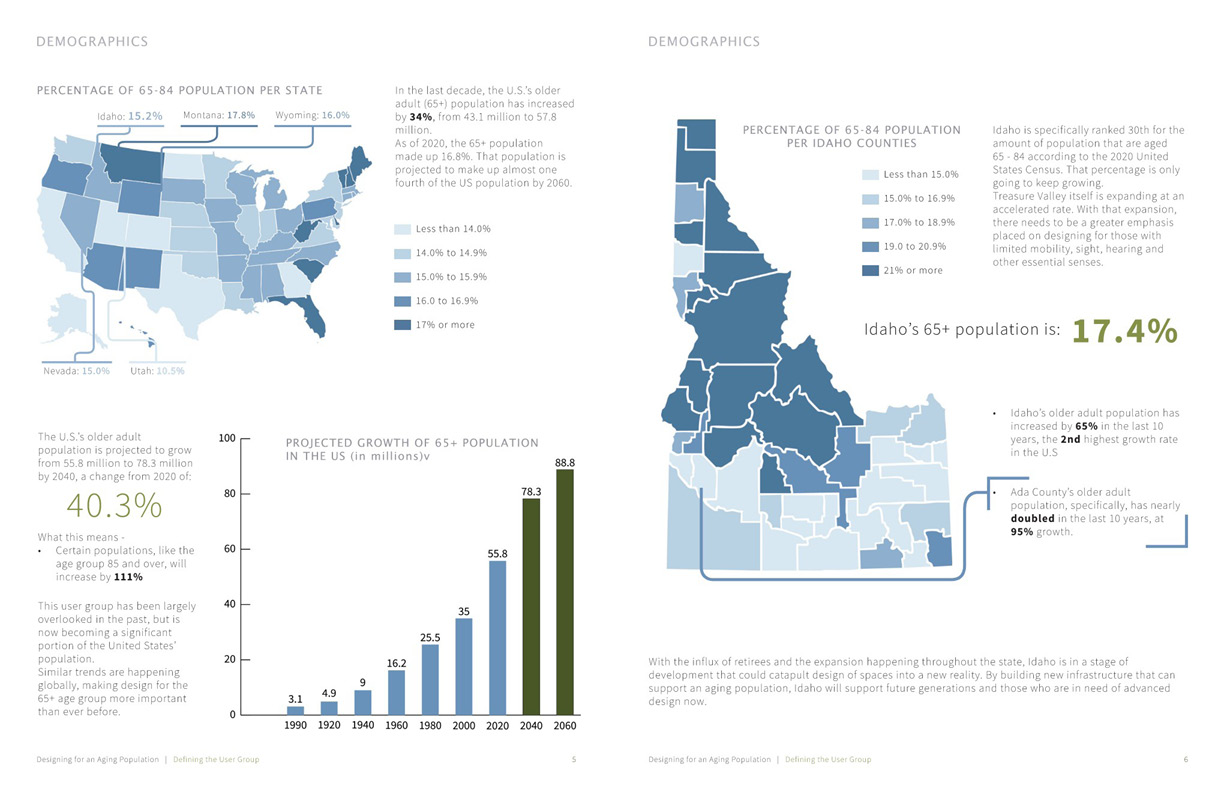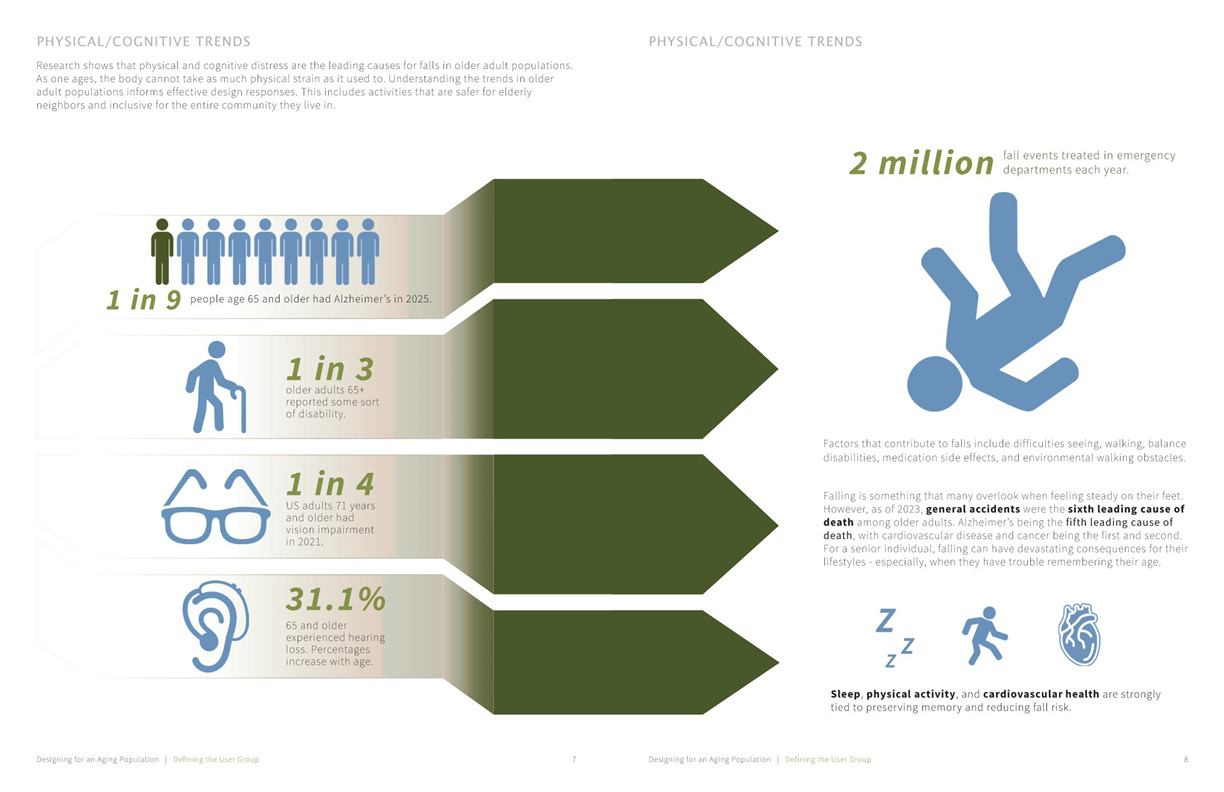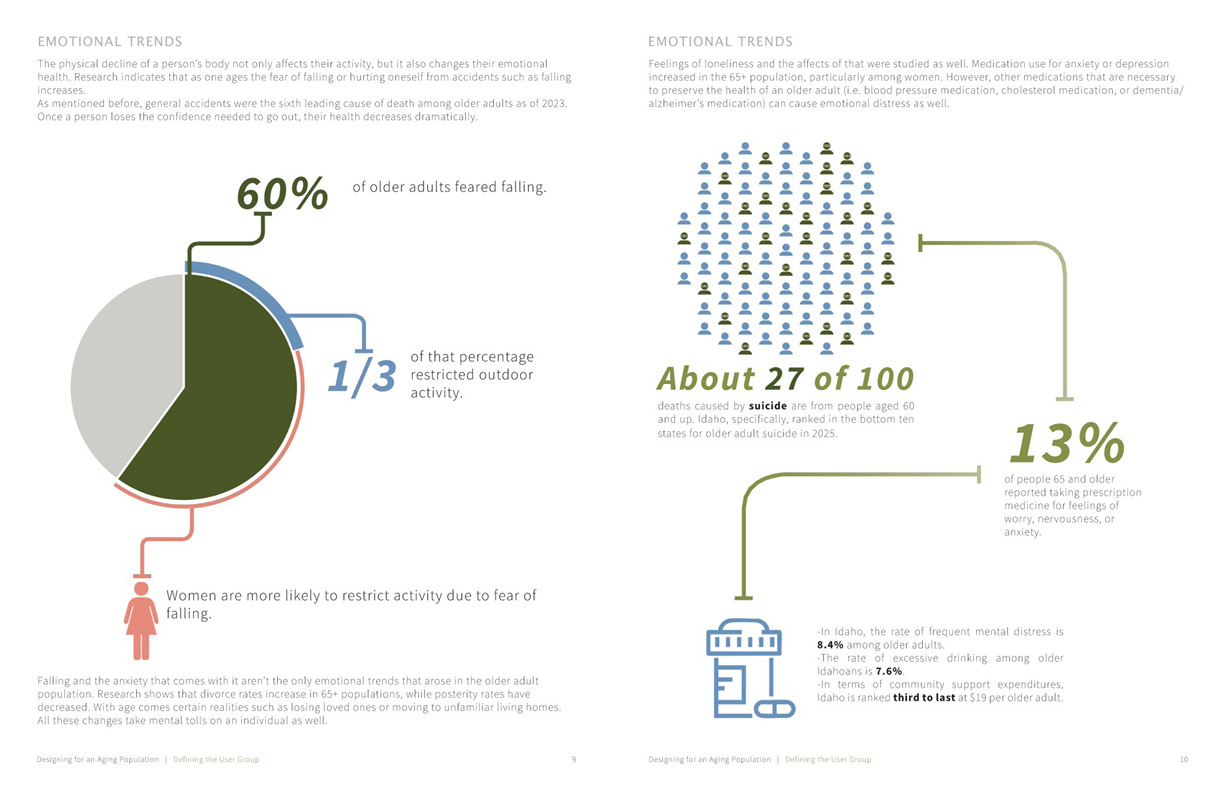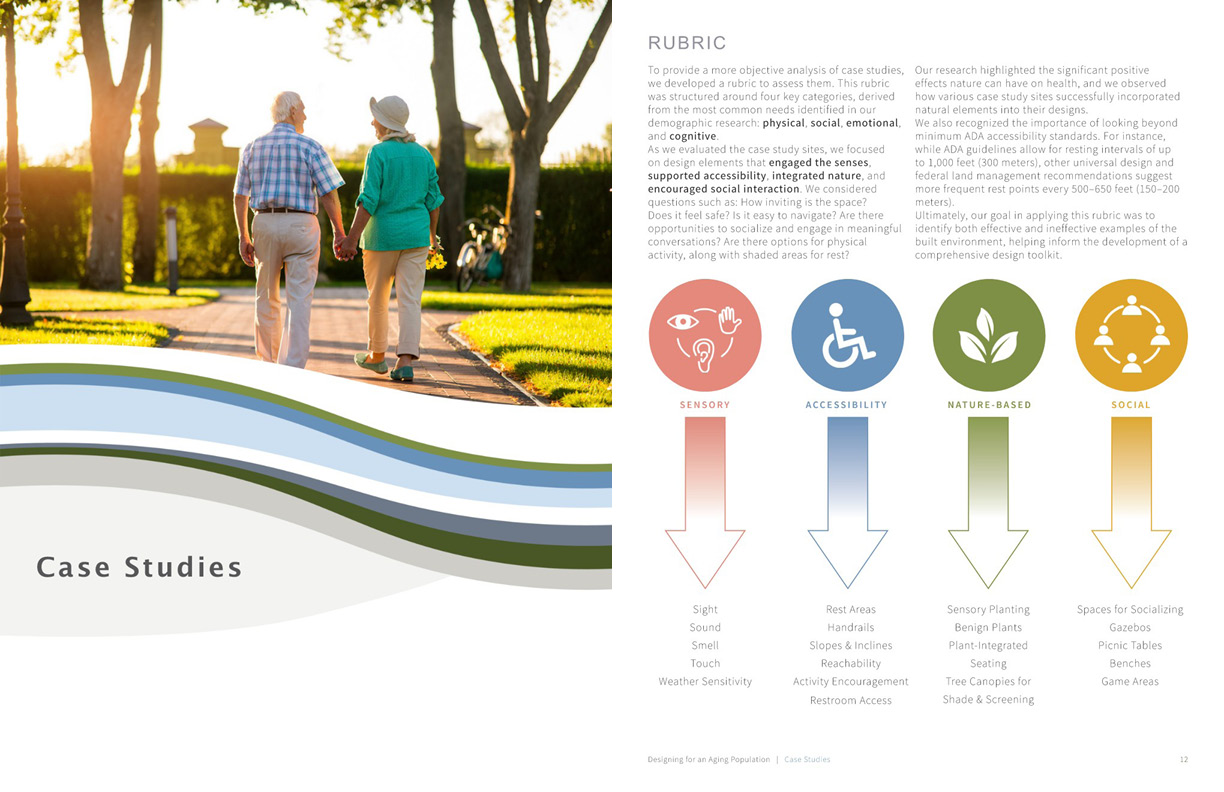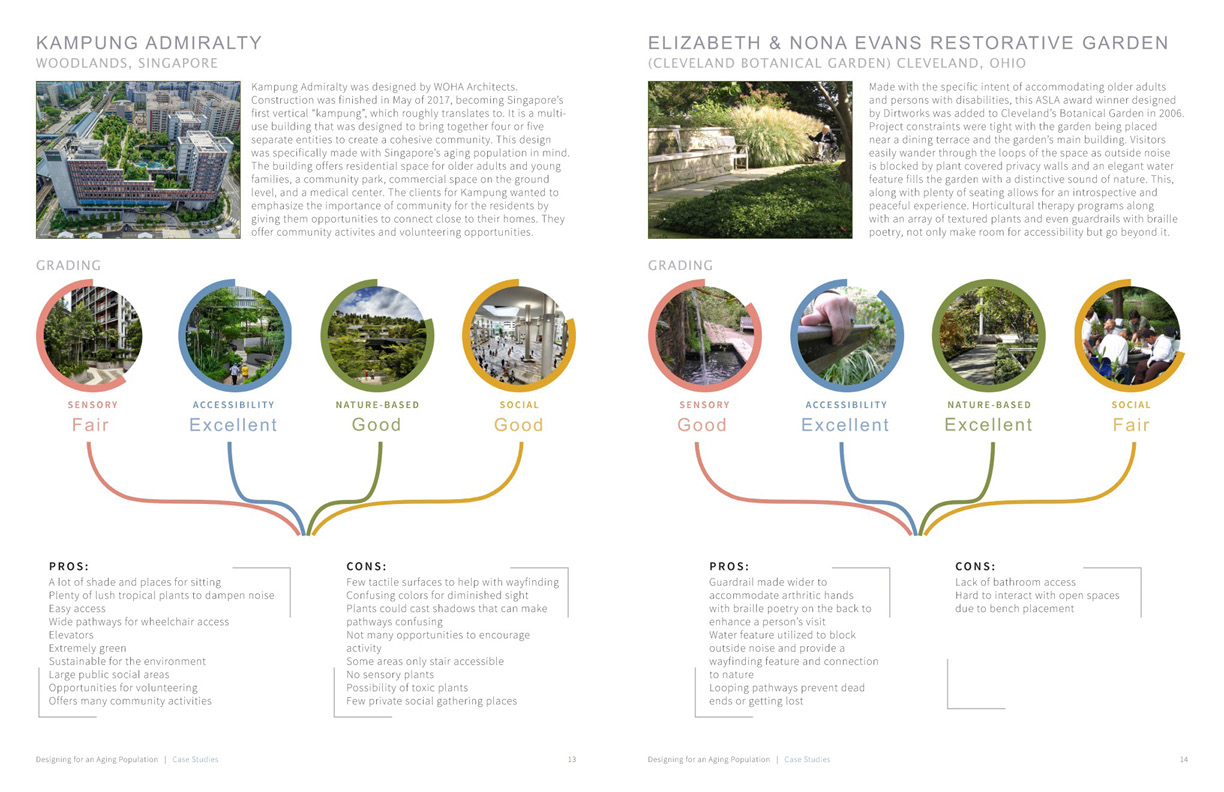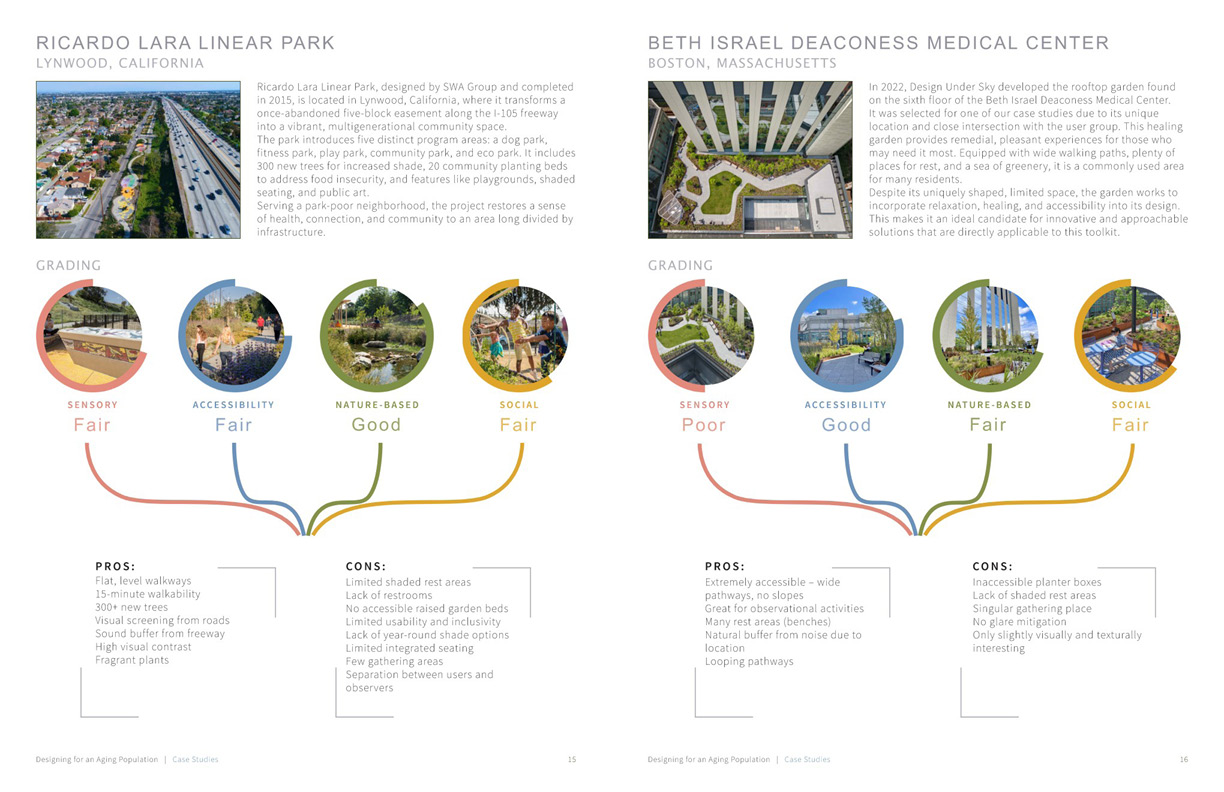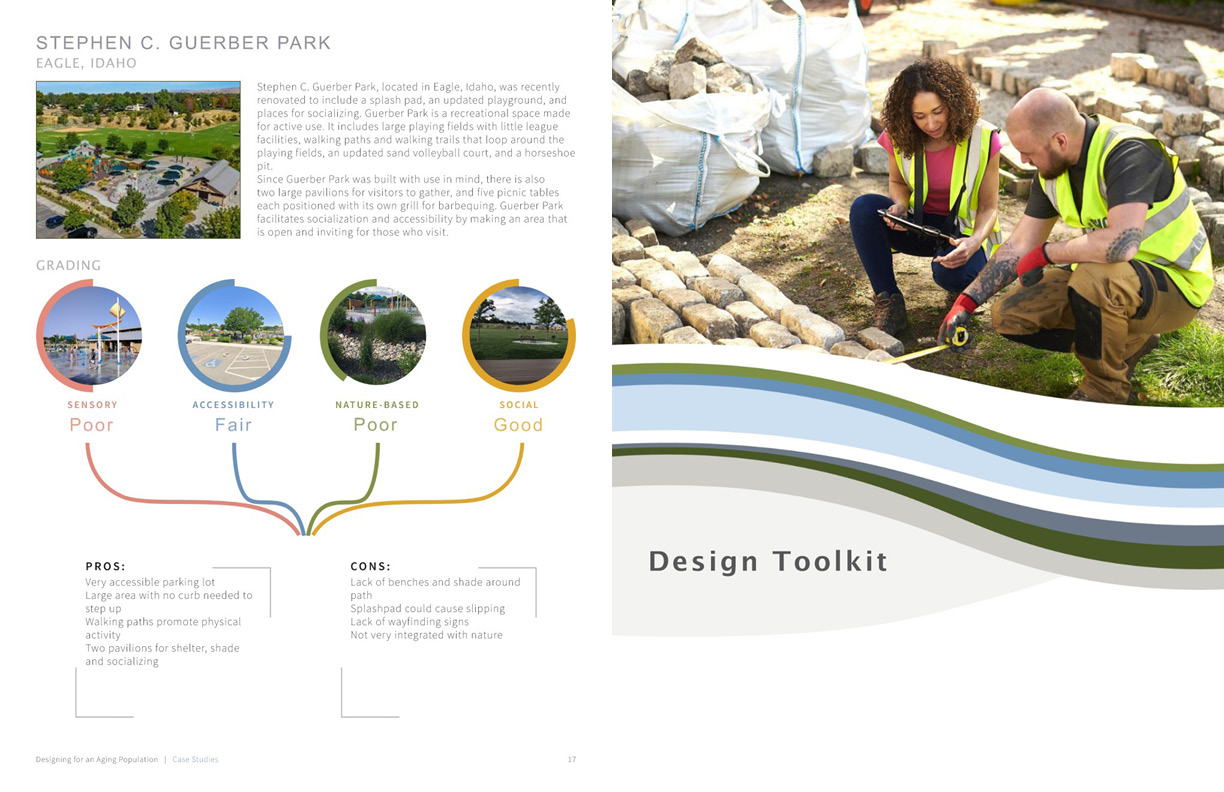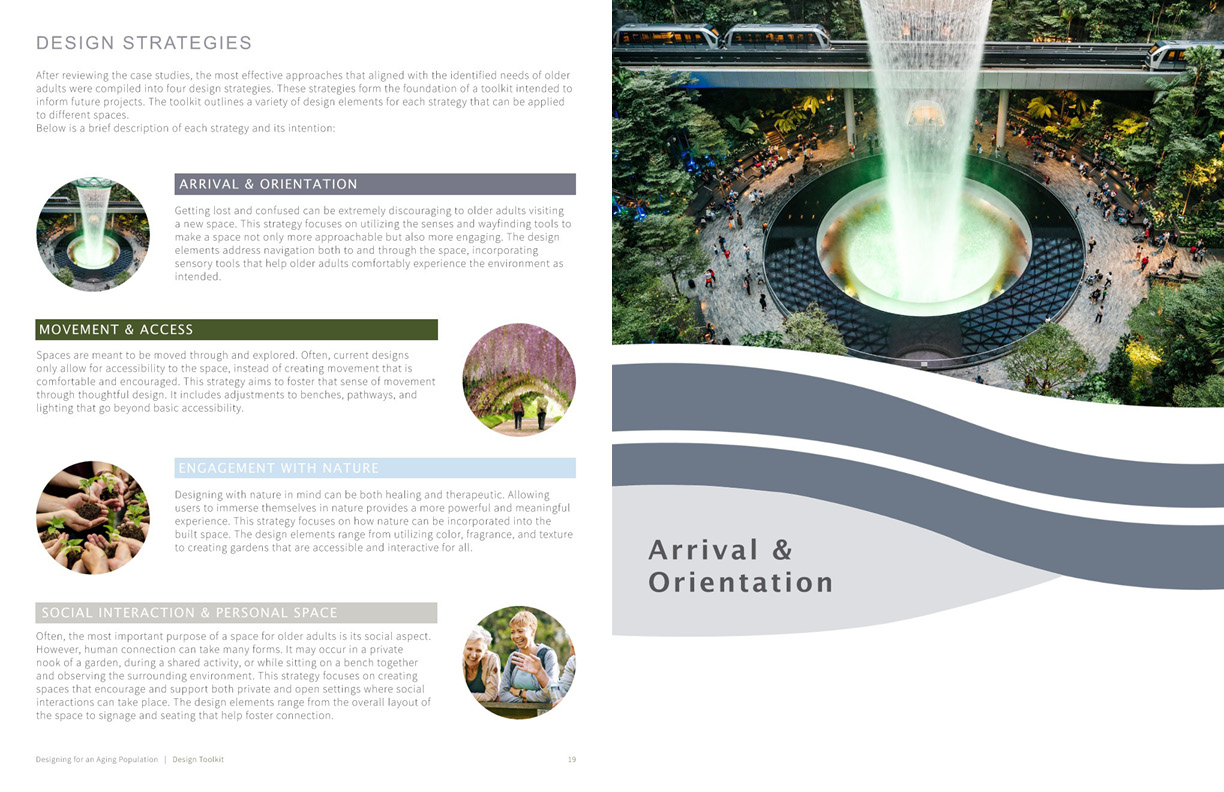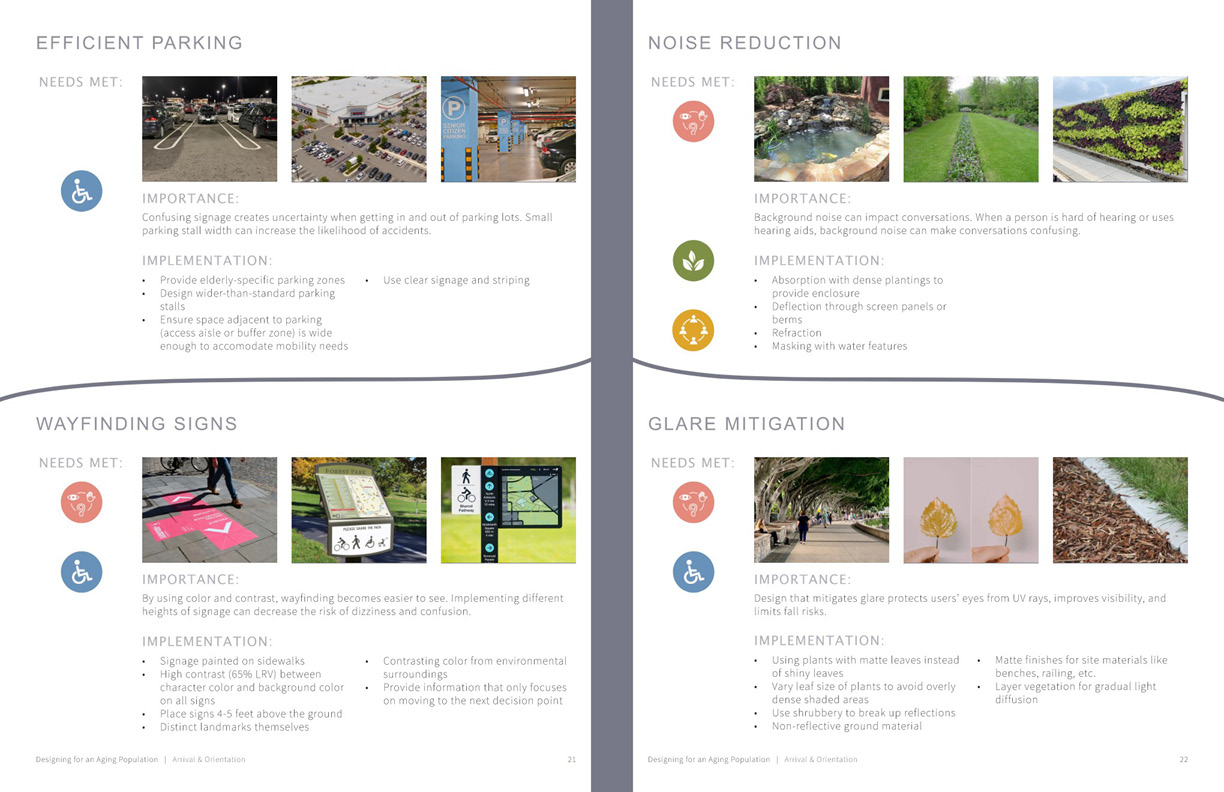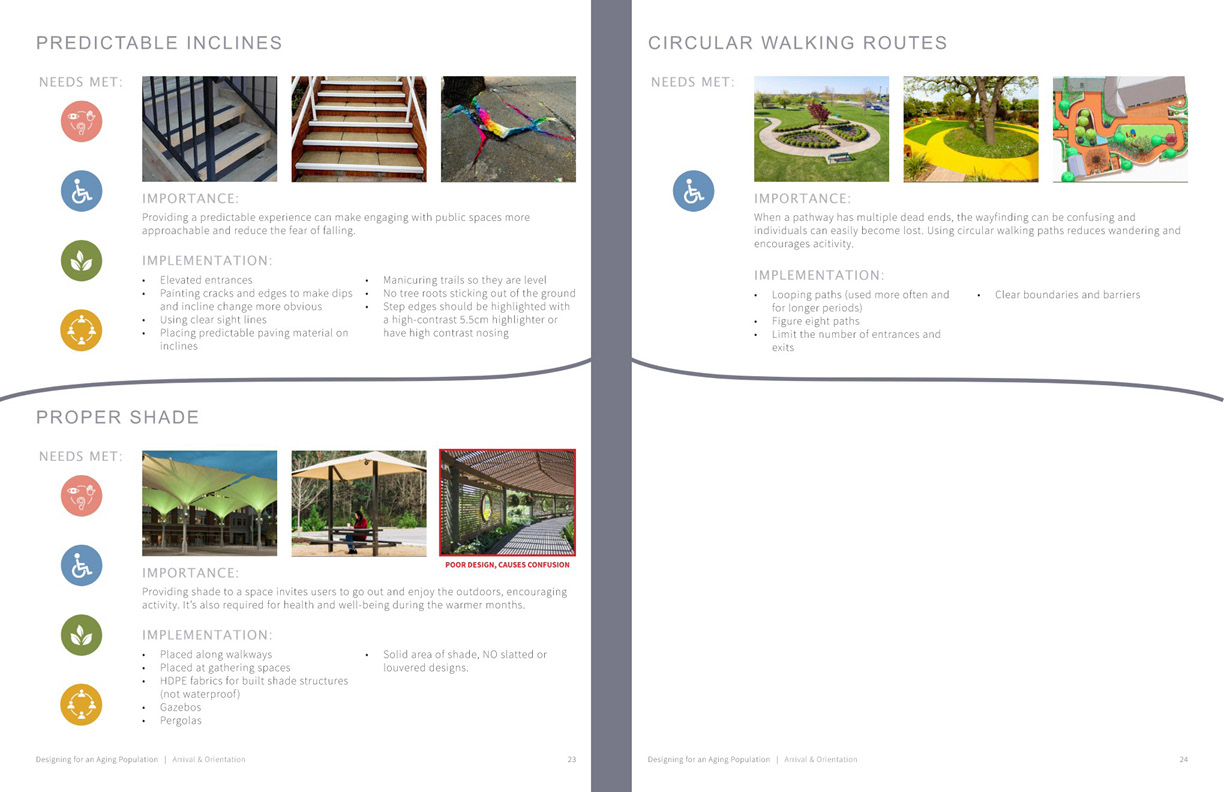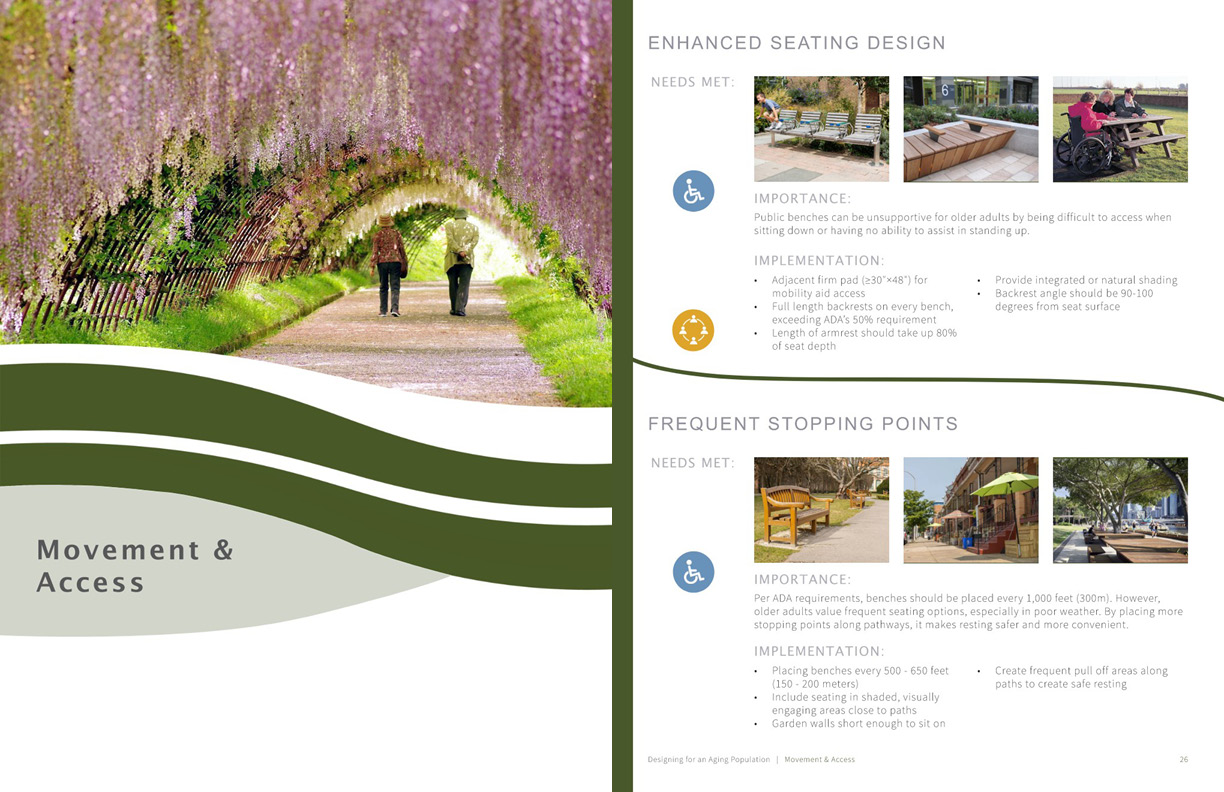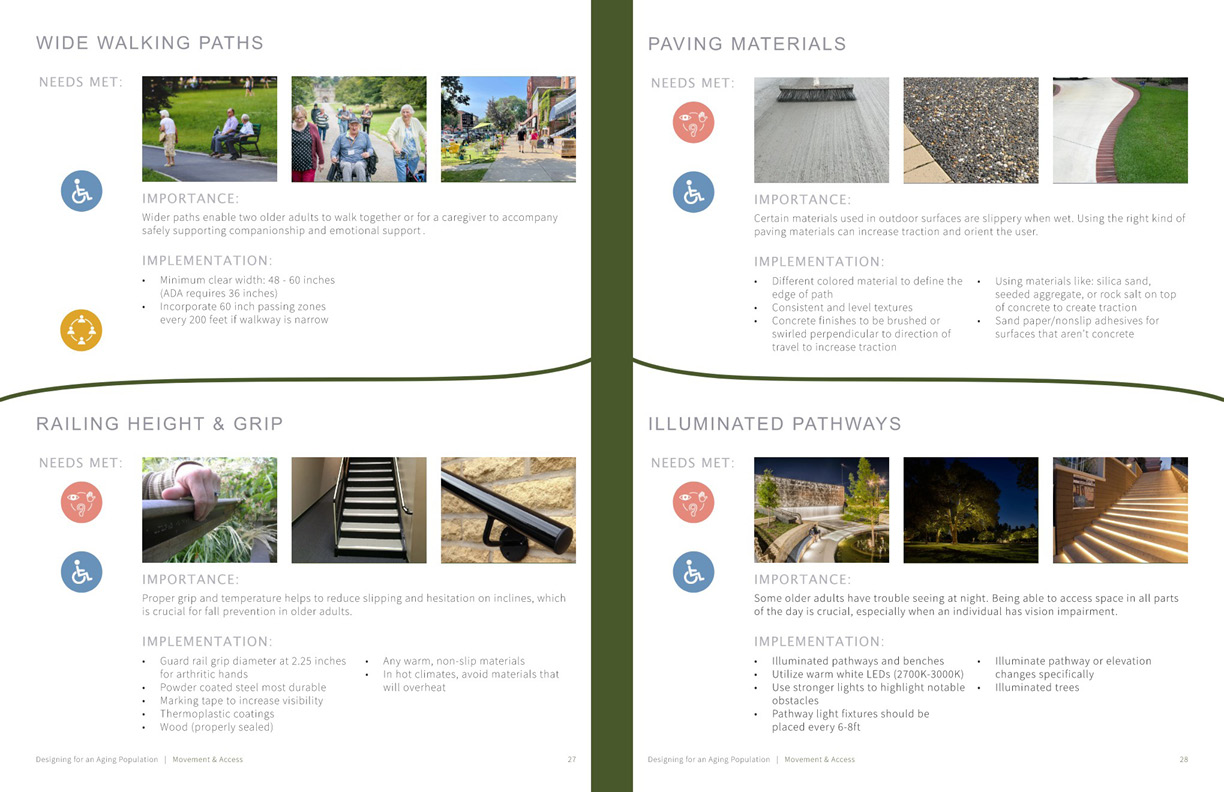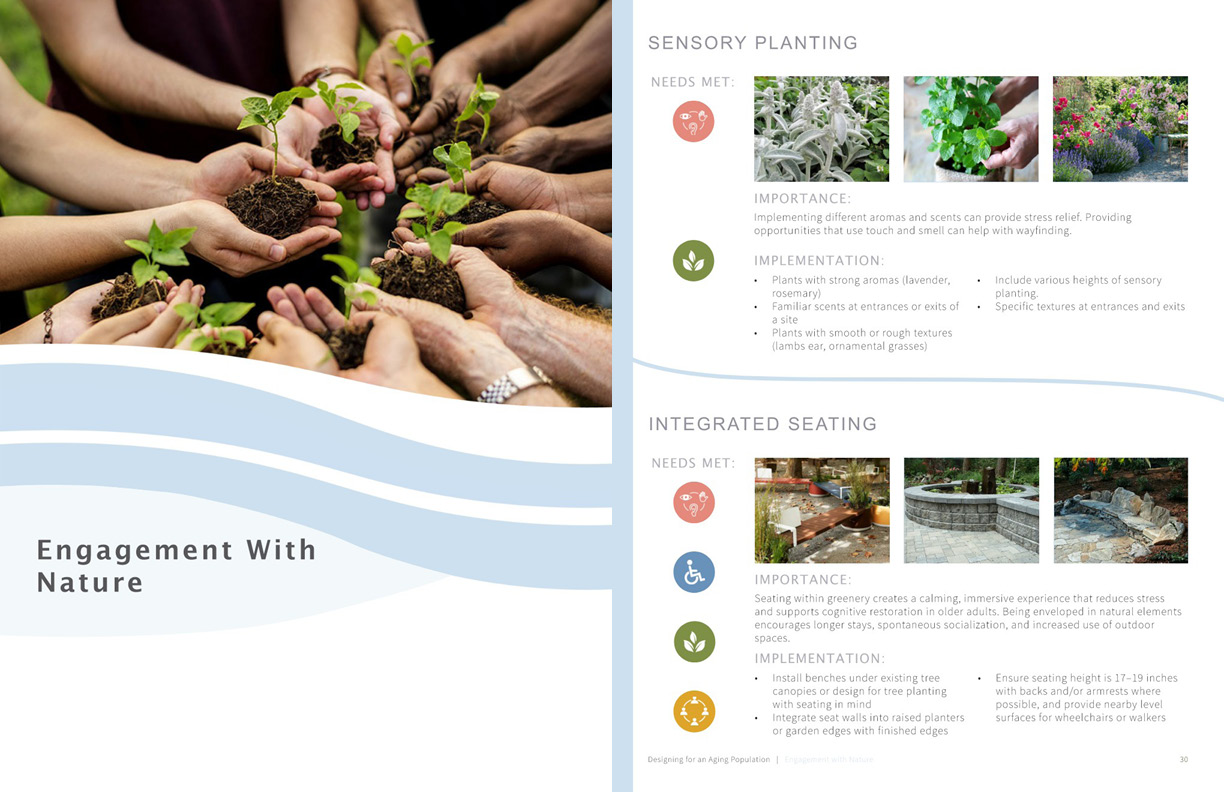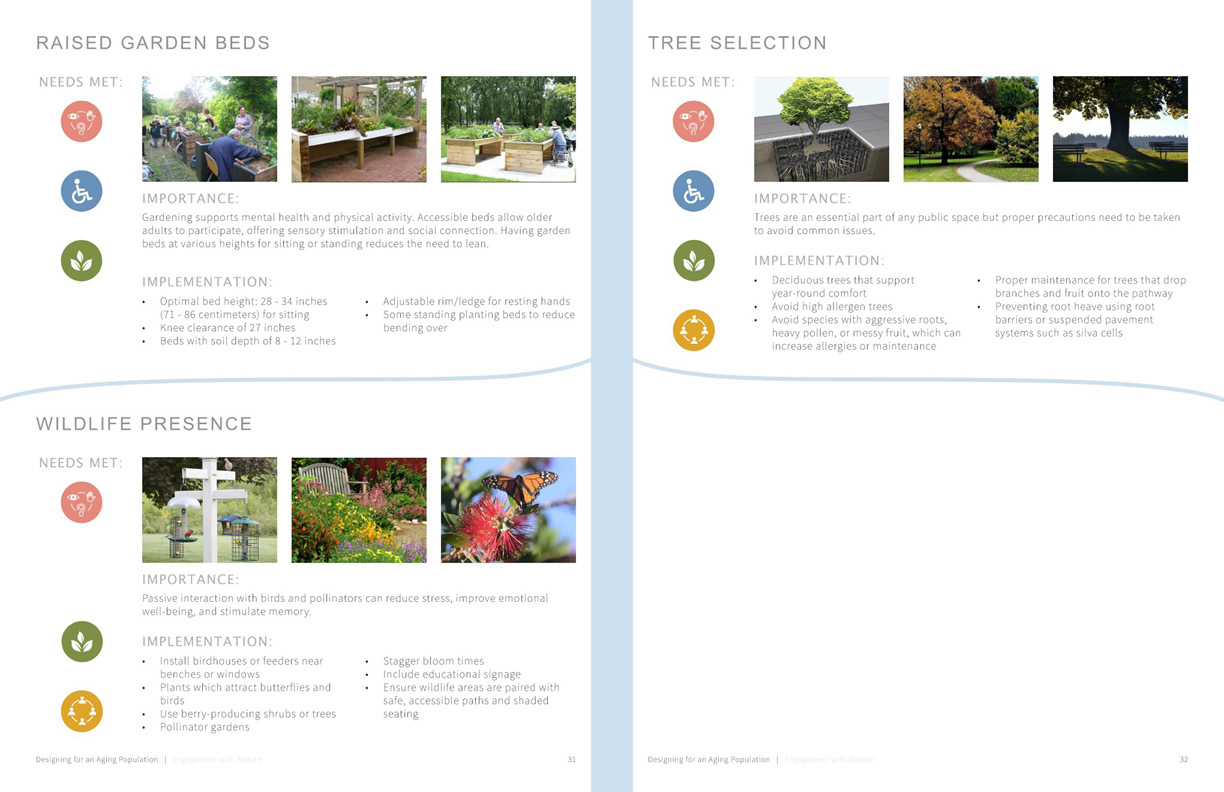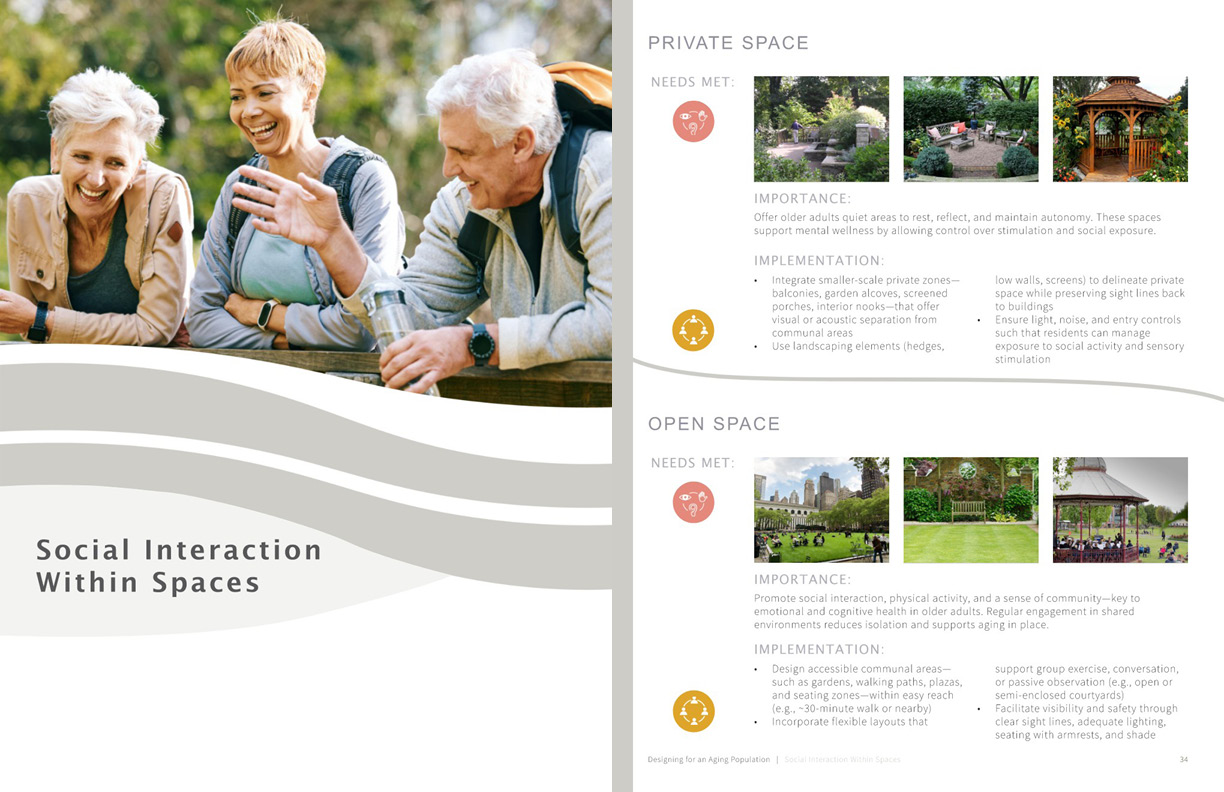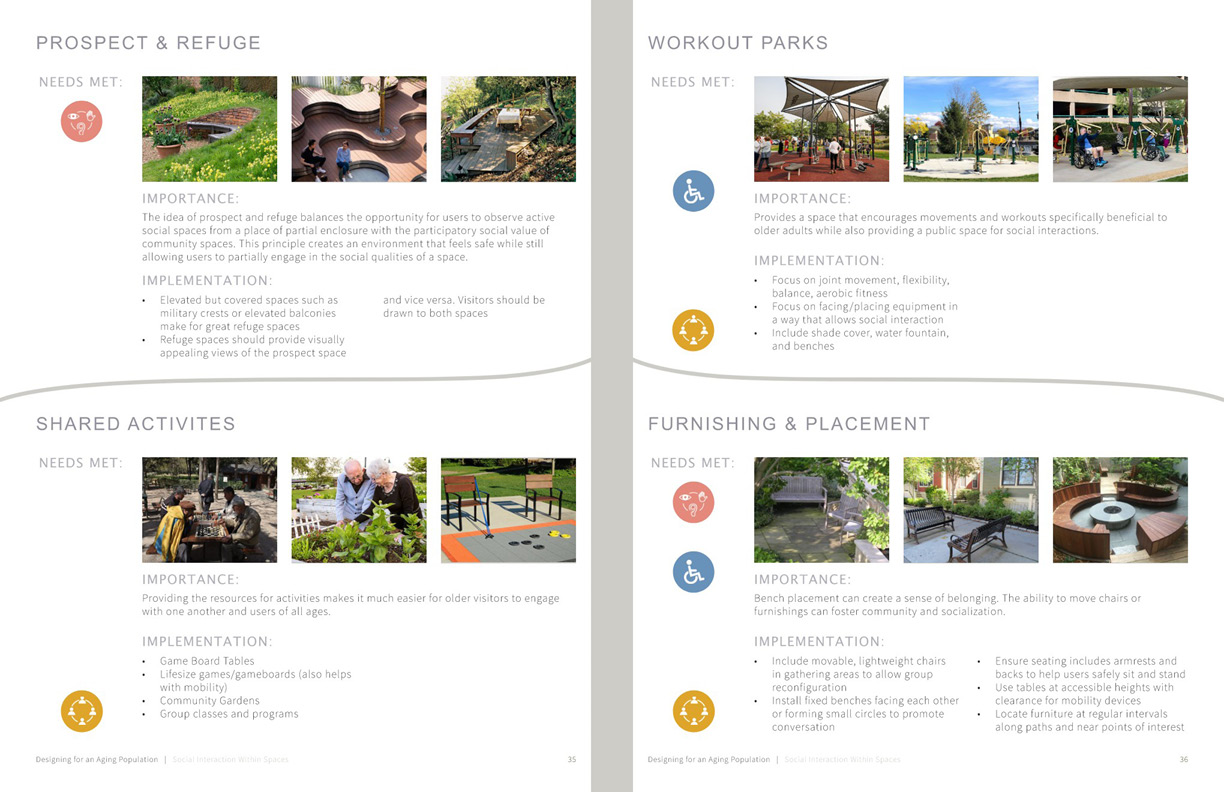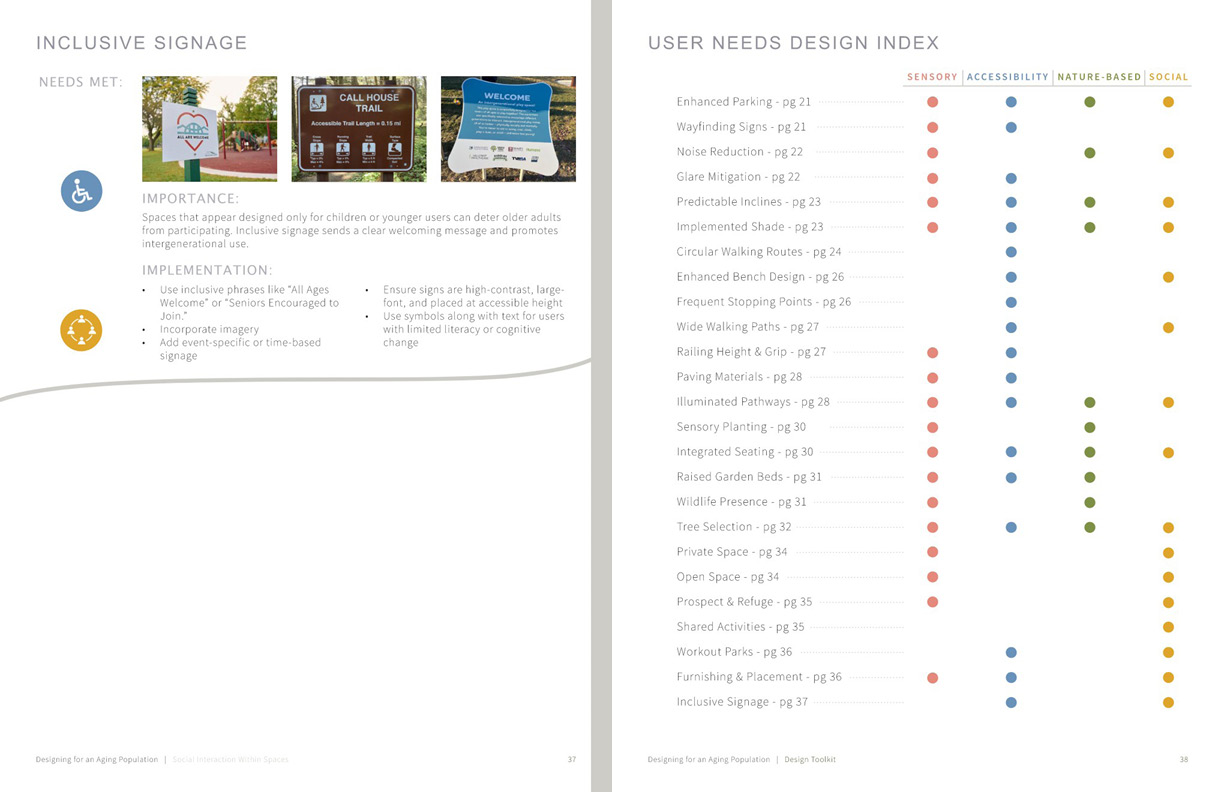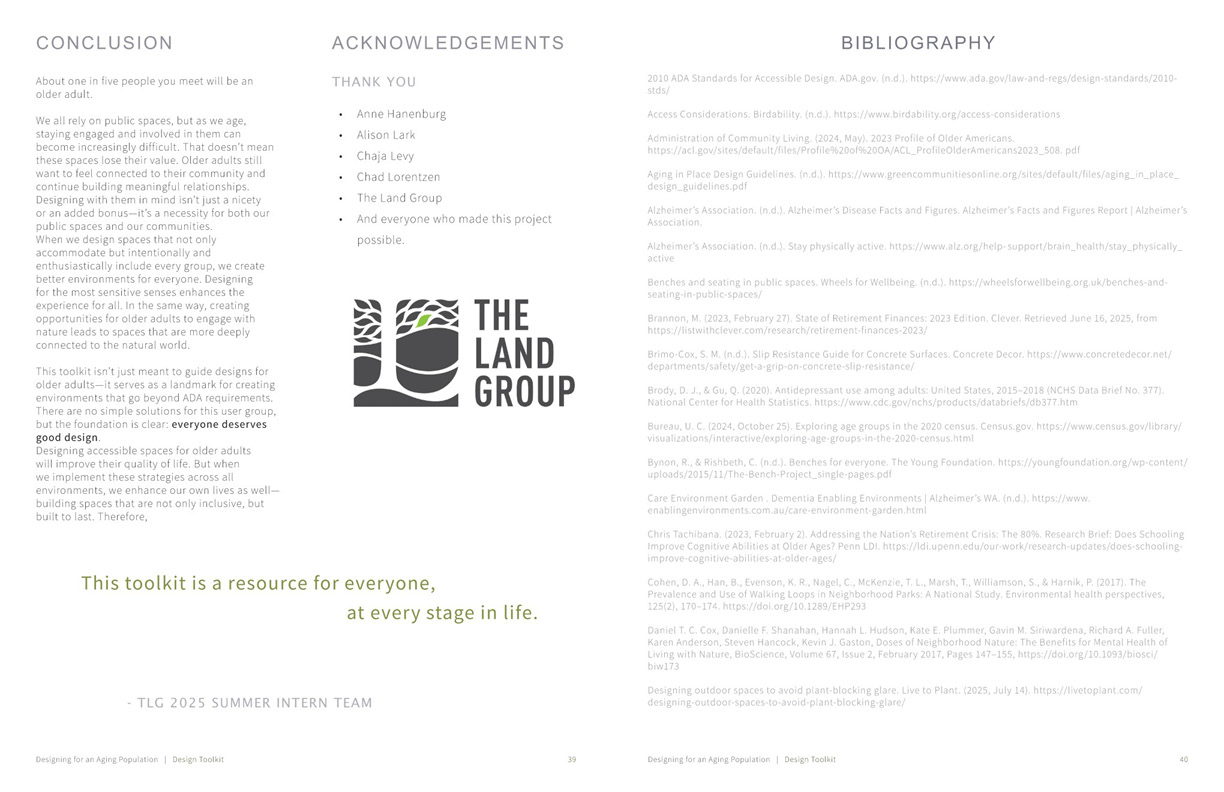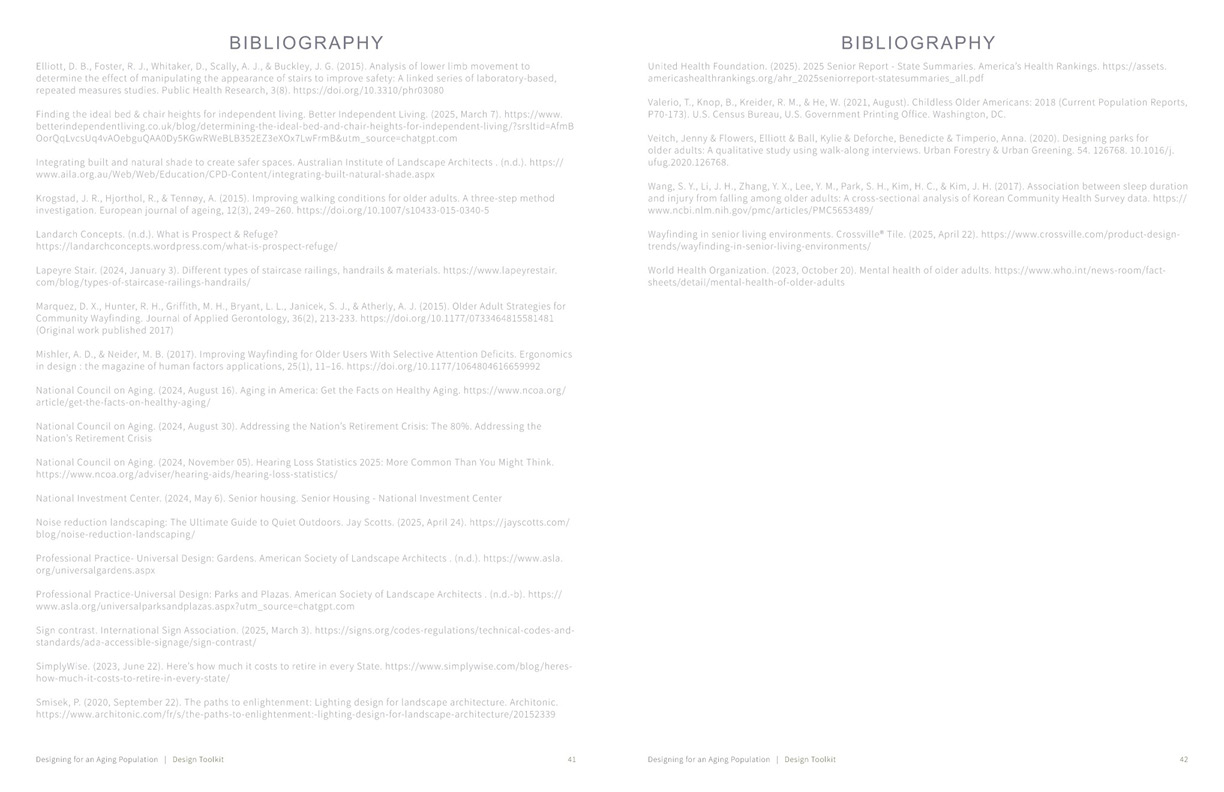The 2025 summer intern research and design project focused on strategies to improve public spaces for an aging population, with an emphasis on accessibility, comfort, and inclusivity. By studying how design decisions affect mobility, safety, and opportunities for engagement, the project produced a comprehensive toolkit of design guidelines that enhance daily life for older adults while creating better spaces for everyone.
Details
Year Completed
2025
Expertise
The 2025 Summer Interns consisted of Brandon Corey (Civil Designer), Nathan Rieth (Civil Designer), Brynnlee Savage (Landscape Designer), Kate Reynolds (Landscape Designer), and Mary Davis (STEM Externship Program).
Partners
SPVV, University of Washington, City of Boise, Leap Housing
Context
context
Public spaces play an important role in supporting health, independence, and social connection, yet many existing designs unintentionally create obstacles. From confusing circulation patterns to unsafe walking conditions and limited opportunities for rest. Too often, designs stop at meeting minimum accessibility standards, leaving older adults without the supportive features that encourage full participation. The 2025 team sought to challenge these limitations, developing a framework that not only meets functional needs but also celebrates the role of older adults in public life.
Process
Process
The interns studied how older adults experience movement, safety, and engagement in outdoor environments. They examined challenges such as background noise interfering with conversation, glare creating visibility hazards, steep or uneven inclines discouraging mobility, and a lack of comfortable seating reducing opportunities to gather. Through this research, they developed a set of strategies that emphasized predictability, safety, comfort, and sensory richness. Design solutions included creating shaded gathering spaces, looping pathways that encourage walking without the risk of getting lost, and benches designed for ease of sitting and standing. The team also highlighted the importance of tactile and aromatic planting to aid wayfinding and relieve stress, raised garden beds that support accessible gardening, and wildlife-friendly plantings that encourage passive engagement with nature.
Solution
Solution
The outcome of the project was a comprehensive design toolkit that reimagines how outdoor spaces can be intentionally structured to support aging populations. This toolkit prioritizes enhanced movement and access through wide, well-lit walking paths, supportive railings, and slip-resistant paving materials. It ensures frequent opportunities for rest through thoughtfully placed, ergonomic seating that incorporates shade and social orientation. Engagement with nature is integrated through immersive planting, raised gardens, and wildlife habitats, while social interaction is supported by providing both quiet, private alcoves and open, flexible gathering areas. The result is a holistic design framework that balances safety with independence, comfort with activity, and private reflection with community participation.
Impact
Impact
The 2025 internship project demonstrated that designing for an aging population extends far beyond compliance with accessibility codes. It offers a vision for spaces that reduce fear and hesitation, encourage activity, and foster belonging. By addressing sensory needs, mobility concerns, and opportunities for engagement, the toolkit empowers communities to create environments that are safe, welcoming, and joyful for older adults. Just as importantly, these strategies elevate the experience for all users, proving that designing with the most sensitive needs in mind results in universally better spaces.
